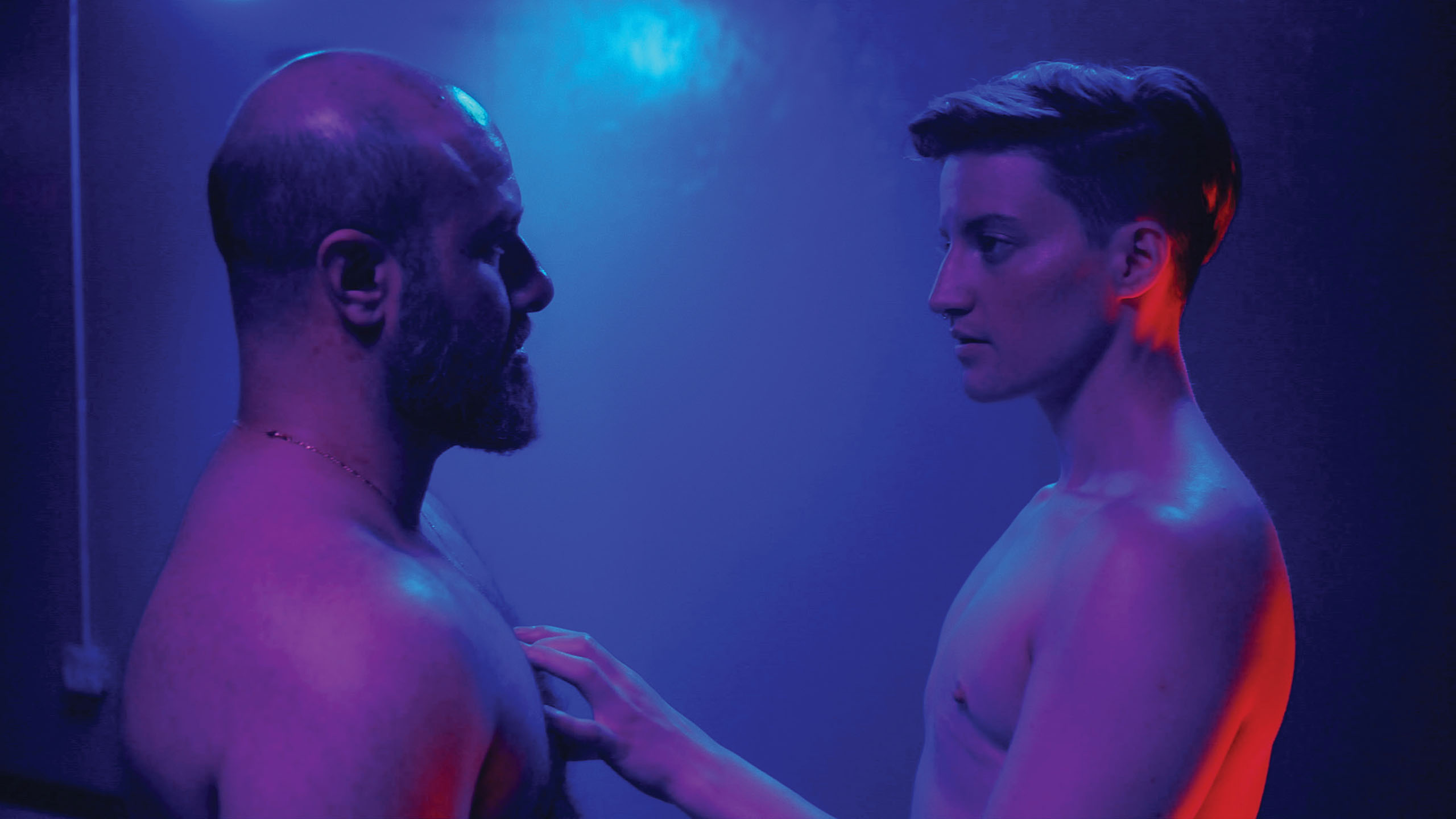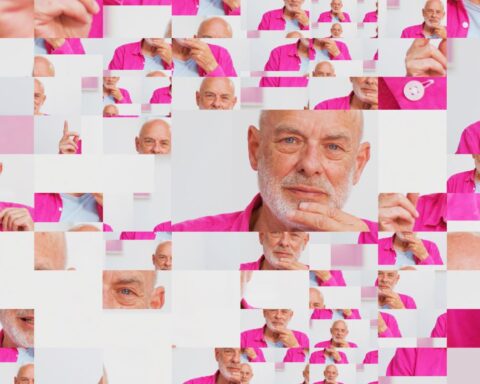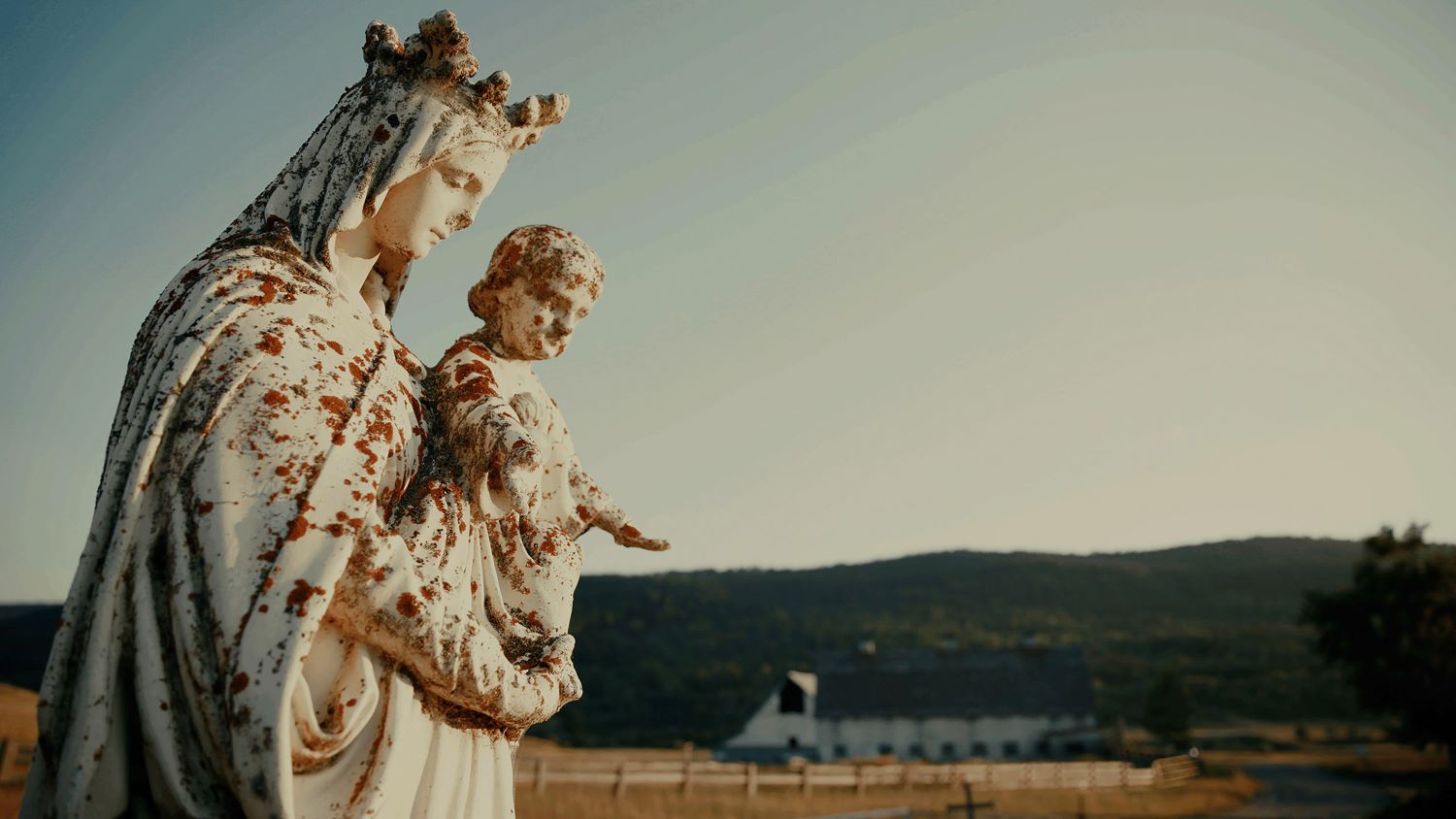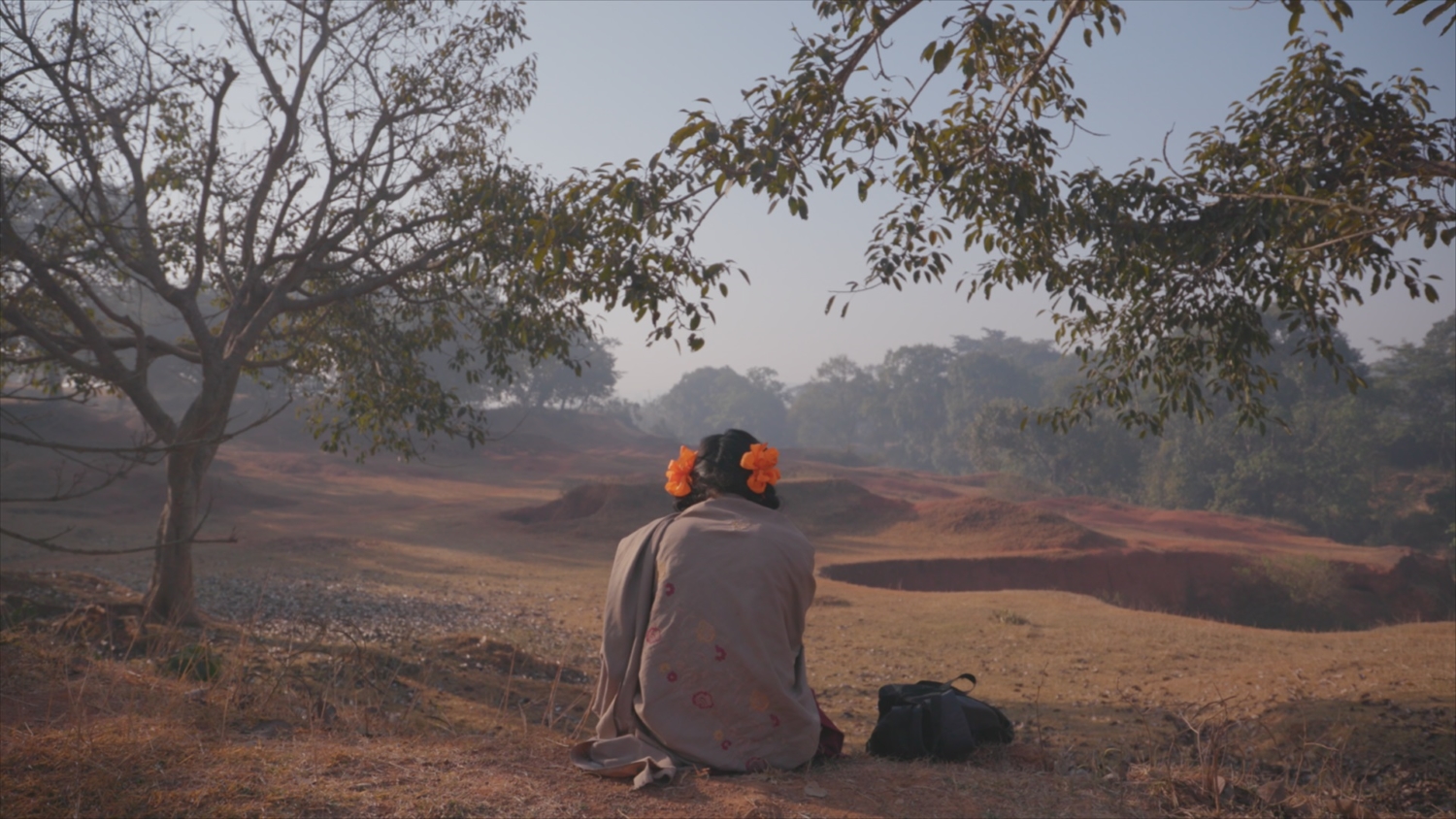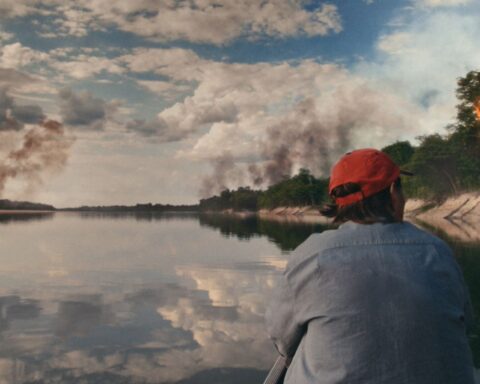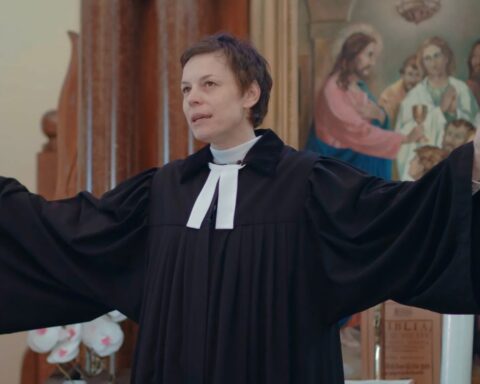Desire Lines features one of the best questions one will ever hear in a film: “Can a vagina be masculine?” director Jules Rosskam asks his interviewee.
The respondent laughs and considers the question. This innovative hybrid film, which premieres at this year’s Sundance Film Festival, draws upon the stories of transmasculine people to consider an overlooked element of the relationship between transness and queerness. Desire Lines considers the stories of men who discover that they are gay after transitioning. The film unpacks what that realization says about transmen’s relationships with their bodies, their hearts, and the fluid nature of identity.
“I asked most the interviewees that question, and everyone had a really different answer,” Rosskam says in an interview with POV. “For some people, the answer was yes. Some people were like, ‘I’m not even going to say that word. I hate it so much.’” Alternatively, one interview in Desire Lines sees a subject proclaim their love for their vagina. They embrace the complexity that relationship entails.
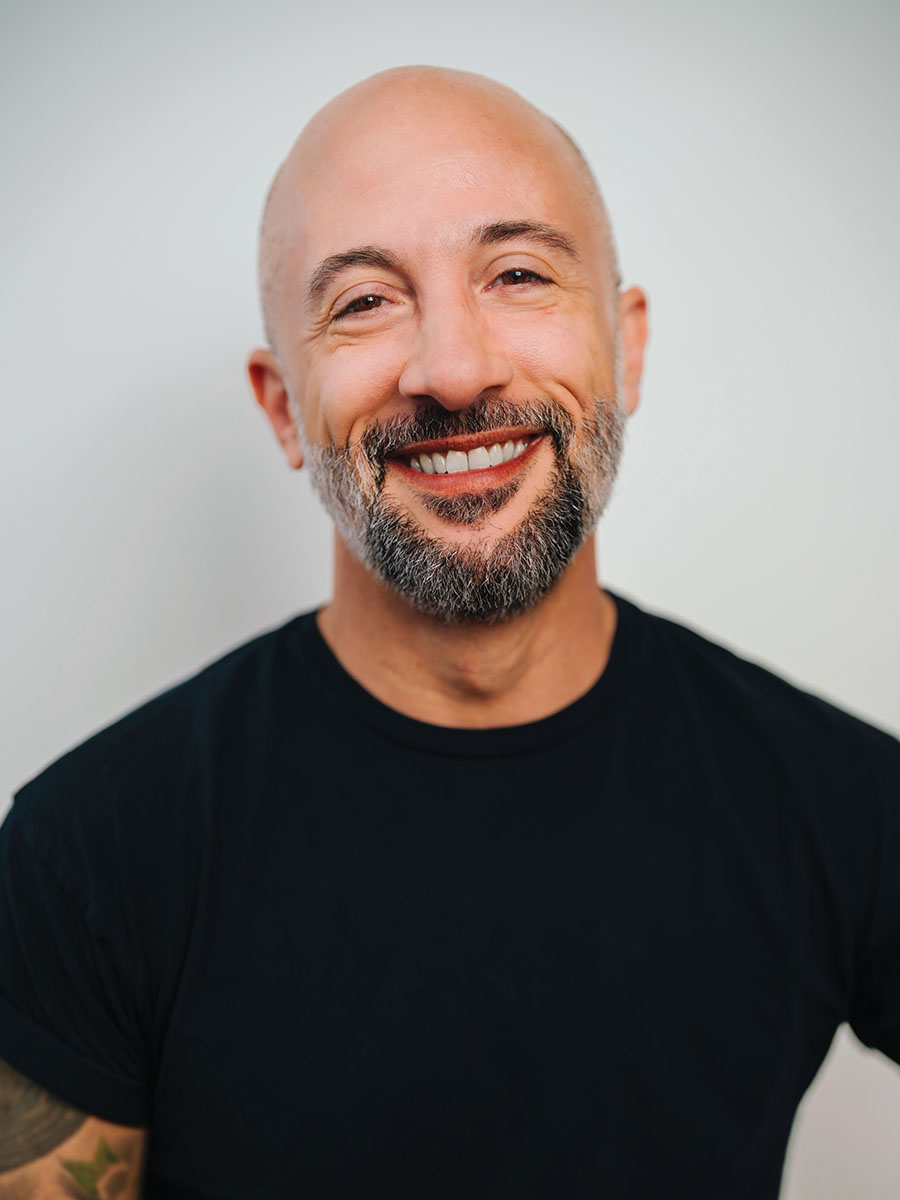
“I think the point is that there’s never a single answer for anything. People are interested in or not interested in re-inscribing meaning to their bodies. Those meanings are open for inscription all of the time,” Rosskam adds. “For some people, there’s a limit: ‘I might be able to see my body a different way than I’ve been taught, than our culture tells me to see it, but that word is impossible for me.’”
Meanwhile, Rosskam says that the question especially sparked debate over how cisgender women might react. Overall, Rosskam says the cis women who pre-screened the film loved the question. “They pointed to that as a moment that they thought was so amazing. It made them think about their own vaginas,” he says. “It makes sense to me because a lot of transmasculine people want to be mindful about understanding the ways in which we talk about our bodies.” Desire Lines also asks the pointed question if someone’s genitals or their heart ultimately govern the laws of attraction for people straight, gay, or anything in between.
“It’s a film I’ve been thinking about making for 20 years, and that emerged from watching this phenomenon among transmen: So many of us seem to develop attraction for other men after coming out as trans,” observes Rosskam. “It’s something I witnessed in community for the last 20 years and have been fascinated by, especially because it doesn’t seem to happen at the same rate or frequency with transwomen.”
Desire Lines explores the lives and loves of transmasculine people in a dramatic storyline (written by Nate Gualtieri) in which Iranian-American transman Ahmad (Aden Hakimi) visits a fictional LGBTQ+ archive. While researching stories of transmen, Ahmad finds himself drawn to the younger transmasculine archivist Kieran (Theo Germaine). Sparks fly and come-hither glances cut across the room as they exchange looks over books. Cut between these scenes, however, are interviews with other transmen that root the fictional story in real perspectives.
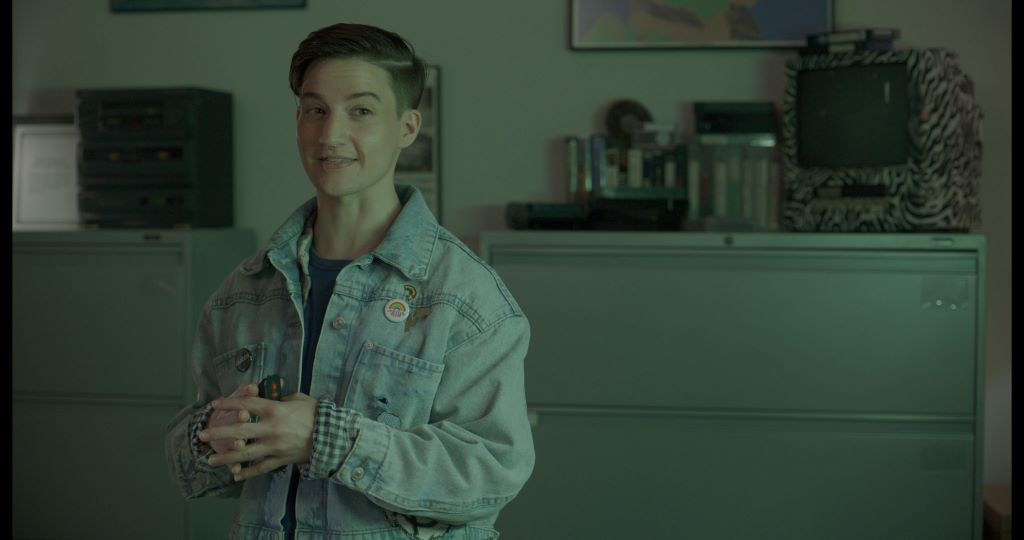
In the archive, moreover, Kieran introduces Aden to the story of Lou Sullivan, an American writer who was the first transgender man to come out publicly as gay. Sullivan’s story piques Ahmad’s interest. He sees in Lou a mentor he never had, and he immediately identifies with his sense of longing. Archival interviews show Sullivan reflecting on what it means to affirm one’s gender and have a new realization of the heart. Meanwhile, Rosskam offers excerpts of Sullivan’s diaries in voiceover as Ahmad pores through the archives. Sullivan’s account provocatively deconstructs the lens of heteronormativity with which trans stories are too often told in movies in which gender transition “corrects,” so to speak, a person’s relationship to his body and his desires.
Rosskam says that his own experience of encountering Sullivan’s story proved an awakening. “As a youngish transmasculine person at the time, I was like, ‘Oh my God. There are other transmasculine people. I was just so blown away that he existed at the time that he did. It was hard enough in the early 2000s and still is now to exist as a transperson, but think about him the ’70s and ’80s and existing in a gay male world,” says Rosskam. “I genuinely feel like I wouldn’t exist if he didn’t exist.”
Desire Lines offers a beautiful assertion of existence, and responds to Sullivan’s diaries with a love letter to the diversity of trans experiences. The interviews with different men offer various stories of sexual re-awakening as people underwent the same discoveries that Sullivan, Ahmad, and Kieran share. Rosskam says these stories push against the prevailing perception about trans lives and loves. “Part of what Lou was fighting against was this notion. He was literally told, ‘If you want to have sex with men, just stay a woman,’ as if those are the same thing. It’s like there’s this conflation around gender and sexuality,” Rosskam notes.
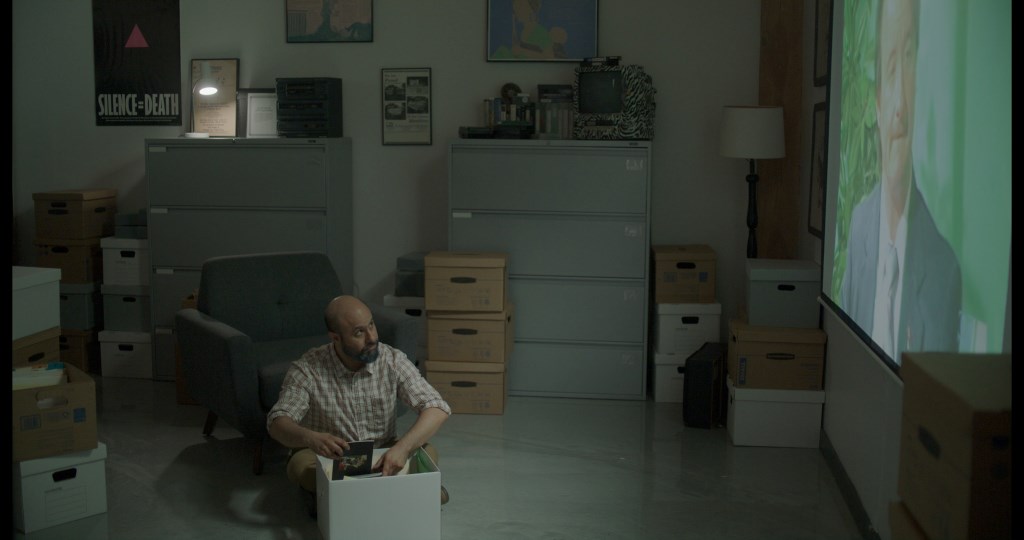
The director adds that it was only until a decade ago that the Harry Benjamin Standards of Care, through which transpeople had to access medical transitions, essentially mandated heterosexuality among its precepts. “I think there was this real fear on doctors’ parts around creating a homosexual,” observes Rosskam. “It’s like, ‘If you are interested in having sex with these people and you want to gender transition, we’re not going to allow that because we would somehow horribly produce another gay person,” he laughs.
But Desire Lines embraces, celebrates, and depicts gay sex in relationships shared by men both transgender and cisgender. Transmen in the interviewees recall life-altering encounters in which they fully came to appreciate and understand their bodies by sharing them with other men. Rosskam, moreover, blurs liminal spaces as the archive’s hallways double as the corridors of a bathhouse. Ahmad, Kieran, and other characters strip down, towel up, and go cruising. Rosskam says the interplay between the archives and the bathhouse was inspired by his interviews.
“I was really surprised to hear how many men had gone to gay bathhouses and had really affirming positive experiences, including affirming experiences about their bodies and understanding their bodies to be, in some instances, not that different from cis men’s bodies,” says Rosskam. “That was huge for them. That was really shocking to me as someone who was terrified to go into spaces that required me to be naked with other cis gay men.” Rosskam depicts the baths as not simply places for sex, but as hubs that cross lines of race and class, build community, and offer a first point of contact for informing men about STIs and AIDS/HIV prevention.
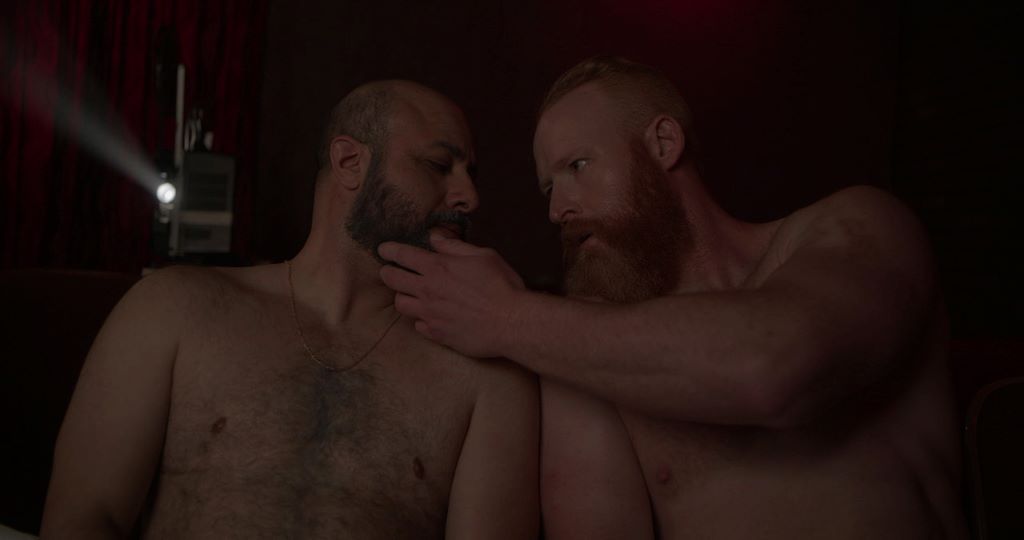
The film has a lot of fun with the interplay between the archives and the baths, too. Rosskam notes that the blurring of institutions draws from his experience of going to the archives to peruse Sullivan’s diaries, but also to observe how people use those spaces, navigating the stacks much like the darker halls of the baths. “I was just thinking about them both as spaces where desire is the active thing and that we could think about them both as spaces of cruising,” says Rosskam. “You’re cruising for sex in one, and you’re cruising for knowledge in another, and that they’re not that different. And frankly, when you’re in an LGBTQ archive, there’s other kinds of cruising happening too!” Desire Lines explores the porous nature of these institutions as Ahmad and Kieran move from one space to another. They gradually realize their shared desires as they navigate the complexity of these experiences.
Desire Lines offers a fine companion to Framing Agnes, the recent Sundance sensation by Rosskam’s contemporary Chase Joynt, as it explores the gray area between fiction and non-fiction, or the encounters between drama and documentary, as a space to consider trans experiences. Rosskam says that he finds the in-between zone productive to go beyond the conventional models that his work aims to shatter.
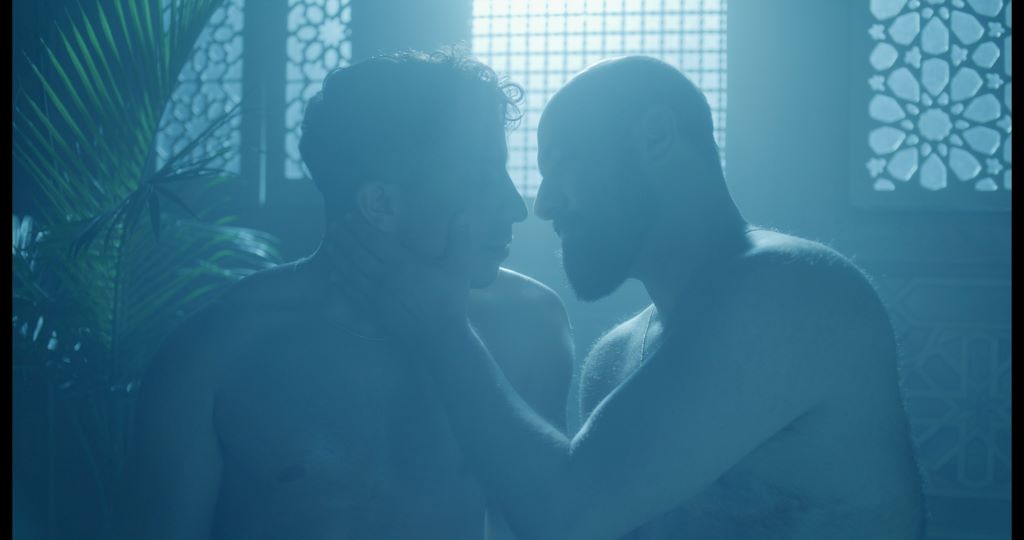
“For me, trans stories, or at least the way that I’m telling them or the kinds of trans stories I want to tell, they have to live in these liminal spaces. I find traditional documentary and traditional narrative to be fairly oppressive forms and very straight and tied up with a larger hetero, patriarchal, white supremacist capitalist project,” observes Rosskam. “If we want to undo them or if we want to create a space for people who are trying to get out from under the oppression that those systems produce, we have to create a space for them to speak differently. When trans stories are put into those traditional forms, then they reproduce these hetero norms, so I’m always looking for ways that open up some new possibility.”
The film invites these possibilities as a time when transpeople desperately need them. As Rosskam notes, over 500 anti-trans bills were brought before the legislature in the USA in the last year alone. At a time when trans lives are being devalued, simplified, and misrepresented, Desire Lines further corrects the narrative by changing the point of reference and affording trans lives complexity and nuance.
“This film was really about leaning into creating a space that isn’t about convincing cis people of our humanity,” Rosskam adds. “This film is not about trying to change cis people’s minds. My films are always primarily first for other transpeople, and I welcome—happily—other people to join that. But I really am trying to carve out a space that opens up new possibilities and futures for transpeople first with the idea that that also opens up possibilities for other people.”




